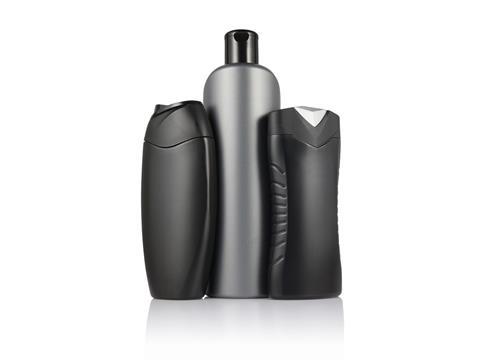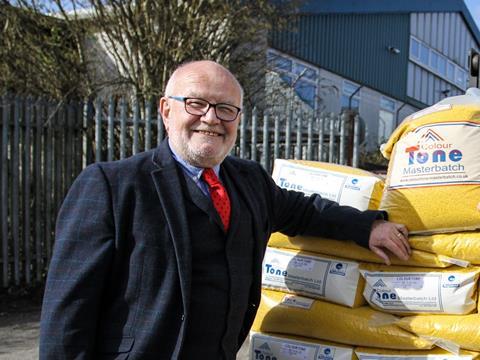
Tony Gaukroger, Director, Colour Tone Masterbatch poses the question: where will recycled plastics material come from to meet future demand?
Brand owners in the personal care market are increasingly focusing on consumer demands for eco-friendly products and recyclable packaging. But with a new single-use plastics tax coming into force in the UK that demands a minimum of 30 per cent recycled content, we should be asking where is this plastics material coming from?
In 2019 personal care brands will be considering every facet of the packaging they develop from the environmental footprint and lifecycle analysis to the selection of post-consumer recycled materials as sustainability like in other industries is a key driver for sales.
But with the government announcing recently its planned new tax on the manufacturing and import of plastics packaging that contains less than 30 per cent recycled plastics. It means businesses have until 1st October 2022 to adapt their processes before the tax is introduced.
As a developer of revolutionary near-infrared colourant (NIR) technology that aids the detection of historically difficult to sort black and coloured plastics packaging, Colour Tone supports this new tax. It is clearly a step in the right direction by encouraging brand owners to develop sustainable packaging solutions, but serious thought must now be given as to where this 30 per cent recycled plastics is coming from?
This will mean investing heavily in the UK’s recycling facilities and on-going subsidies to do more at home rather than relying on the continued practice of exporting our plastics waste to markets abroad.

Tony Gaukroger, Director, Colour Tone Masterbatch
Brand owners to solve our recyclability problem
The focus is now very much on brand owners to solve the problem of recyclability, but the government needs to recognise the inadequacies in the UK’s recycling infrastructure to meet demand. There is little benefit in raising recycled content unless we are also ensuring at the same time that it is being processed.
According to the British Plastics Foundation, the UK’s recycling rate for plastic packaging is currently 46 per cent, but we are making a fundamental error if we are to assume that 100% of this recycled material will be available to use in new packaging as the government intends.
Since not all of this recycled material will be either of the required quality, or available in the polymer types to enable producers to use it in new packaging. Producers are in fact being set up to fail by trying to achieve this target - as the amount of packaging produced increases each year, but the actual tonnage available for re-use is only a smaller fraction when based on the previous year’s usage.
There are two key considerations that we must address to satisfy the government’s ambitious targets: -
• How to ensure a large source of recycled feedstock?
• How to effectively ‘mask’ the recycled content in new packaging to ensure it too can be recycled?
Ensuring a large source of recycled material
Our first priority is to ensure we have a large source of recycled material suitable for reclaiming back into new products - this will require the identification, sorting and preparing plastic for recycling from existing post-consumer waste streams. To make this possible the packaging materials we use today, will need to meet this challenge.
This means designing packaging for ‘end-of-life’ recycling and introducing a consistent approach towards the separation of mixed post-consumer waste to maximise our recycling potential and minimise landfill.
End-of-life recycling
The near-infrared (NIR) spectrography used by UK materials recovery facilities (MRFs), offers a fast method of sorting mixed plastics waste by polymer type. The major limitation with this process however, is that if the plastic is coloured and the colourant in the packaging may strongly absorb, rather than reflect NIR, so the sorter is unable to identify the ‘signature’ from the spectrophotometer.
Colour Tone helped to pioneer a novel colourant technology that is increasingly being adopted by packaging producers, it is able to reflect radiation to optical sorters used by recyclers so coloured and black plastic items become ‘visible’ for detection. This means that black plastic is no longer perceived as ‘bad’ plastic, it is in fact ‘green’.
‘Masking’ recycled content in new packaging
We must also consider if and when, we start incorporating this proposed 30 per cent of recyclate back into the new packaging that it is aesthetically pleasing and able to meet the same criteria. The new products will need to be coloured to "mask" the appearance of the prime polymer containing recyclate, so the need for NIR detectable black and coloured plastics becomes even more acute.
The alternative of course, is that brand owners may decide to switch to near infrared detectable natural, clear or light coloured products featuring 30 per cent recyclate, but these will look discoloured and therefore unacceptable to consumers. No-one is going to buy hair care or soap bottles in "dirty" looking plastic packaging.
The adoption of Colour Tone’s novel colourant technology will therefore, help brand owners and packaging manufacturers to meet sustainability goals by ensuring the recyclability of black and coloured packaging. But if we want to move from a linear to a circular model the entire supply chain must meet the challenge of processing plastics waste otherwise the new tax may only set up brand owners to fail.











